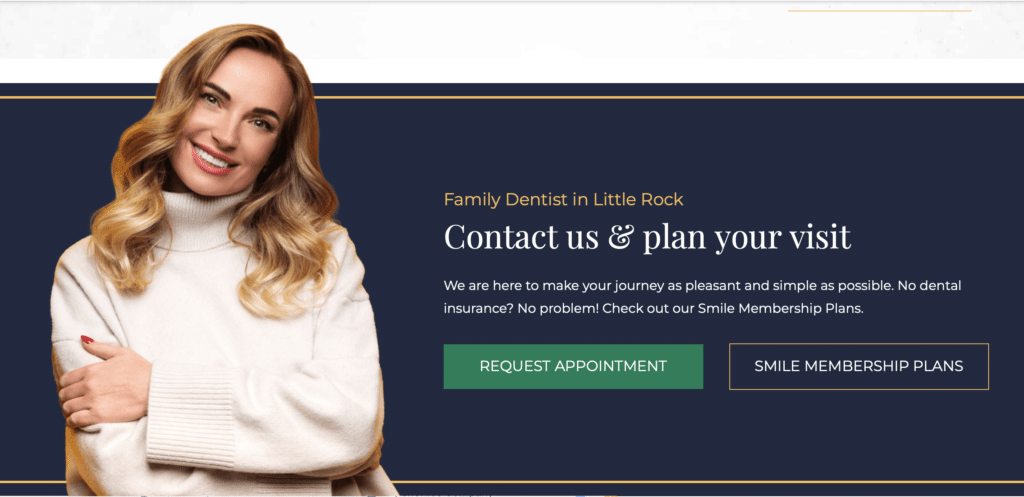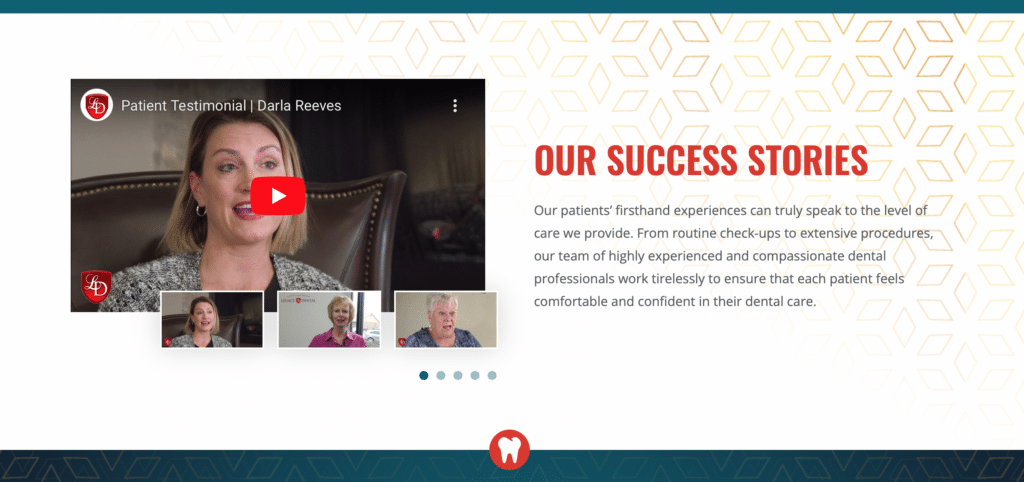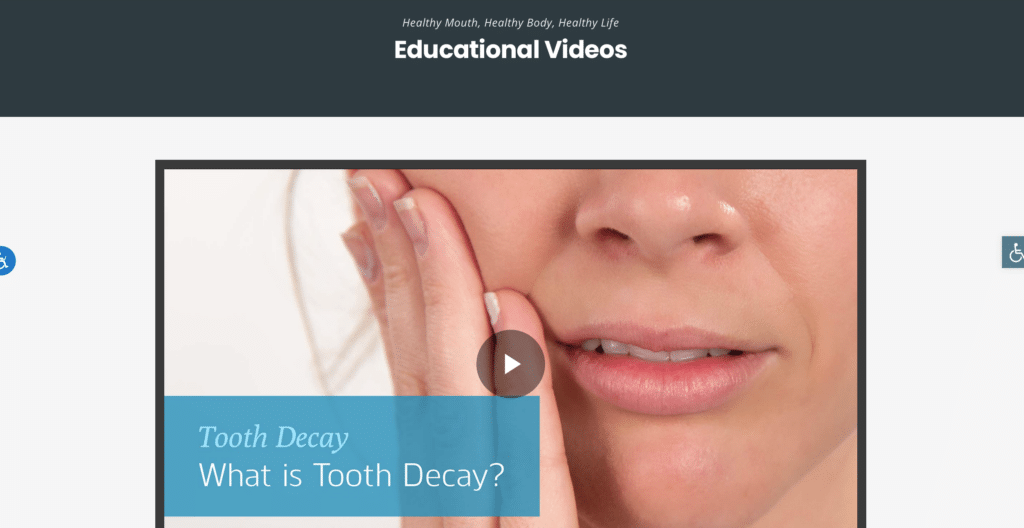10 Things Every Dental Website Needs
Are you tired of your dental website falling flat and failing to attract new patients? Don’t worry, you’re not alone. Many dentists find themselves in the same boat and are left scratching their heads as to why their website is not translating into new patients in their chairs. In the digital age, a well-designed website […]

Are you tired of your dental website falling flat and failing to attract new patients? Don’t worry, you’re not alone. Many dentists find themselves in the same boat and are left scratching their heads as to why their website is not translating into new patients in their chairs. In the digital age, a well-designed website can make all the difference in converting traffic into patients.
As more patients turn to online searches to find dental offices near them, having an optimized dental website becomes paramount. Whether you’re creating a new site from scratch or looking to revamp your current one, there are essential elements you shouldn’t overlook. Let’s unpack the 10 crucial components every dental website should have.
The Importance of An Optimized Dental Website
One of the most significant advantages of having a strong website for your dental practice is the ability to reach a broader audience. With traditional forms of advertising becoming less effective, an online presence allows you to connect with potential patients beyond your immediate community.
A well-optimized website can appear on search engine results pages when people search for keywords related to dentistry or specific services you offer in your area. This increases your chances of being discovered by potential patients who may not have known about your practice otherwise.
Having a professional-looking website can also help establish trust and credibility with both current and potential patients. In today’s world, many people do extensive online research before making any decisions, including choosing their dentist, making it non-negotiable to have a professionally-designed website.
10 Must-Haves Your Dental Website Needs
1. A Clear Call-to-Action (CTA)
Your dental practice’s website may be visually appealing, but is it directing visitors towards a specific action? Whether it’s booking an appointment, signing up for a newsletter, or calling for a consultation, a clear CTA is indispensable. It should be prominently displayed, preferably at the top of the page, and repeated in other strategic locations. The goal is to guide visitors smoothly from browsing to action.

2. Informative Service Pages
Patients visit a dental website primarily to learn about the services on offer. Ensure your service pages are comprehensive, detailing everything from routine check-ups to specialized procedures. Each service should have its dedicated page, complete with relevant images, benefits, and what patients can expect during the visit. It is also always handy to include some frequently asked questions on your service pages to ease any concerns potential patients may have. This not only helps potential patients but also improves search engine visibility. Remember to localize your content to boost visibility in your area and have a strong CTA at both the top and bottom of the page.
3. Patient Testimonials
Word of mouth in the digital realm translates to online reviews and testimonials. Showcase genuine patient testimonials on your dental website. These serve as powerful endorsements, establishing trust with potential patients. If possible, include before-and-after photos, especially for cosmetic procedures where patients want to see your work. This visual transformation can be a compelling drawcard.

4. Mobile-Friendly Design
With most users accessing websites via smartphones, a mobile-responsive design isn’t optional; it’s essential. Ensure your dental website looks good and functions flawlessly on devices of all sizes. A reputable dental website company will prioritize this, ensuring easy navigation, quick loading times, and an overall positive user experience on mobile.
5. Educational Blog Section
A blog can position your dental practice as an authority in the field, offer value to visitors, and aid in search engine optimization. Regularly post articles addressing common dental concerns, offering oral care tips, or delving into the latest dental technologies and treatments. Sprinkle keywords with a decent traffic volume throughout the content to help patients find your blog articles when searching for help.
6. Online Appointment Booking
In today’s fast-paced world, convenience is key, with many people not having time to make phone calls. The millennial generation is also well-known for not being big fans of phone calls, so its important to cater to these changing preferences. Incorporate an online appointment booking system on your dental website to make it easy for patients to schedule their next visit. This allows potential patients to schedule a consultation at their preferred time without the back-and-forth of phone calls. These systems are generally very user-friendly, secure, and send out appointment reminders to minimize no-shows.

7. High-Quality Images
You know how the old saying goes: a picture is worth a thousand words. And when it comes to attracting new patients to your dental practice, it couldn’t ring truer. You should aim to use high-resolution images on your dental website, showcasing your clinic’s interiors, team members, and happy patients. As a rule of thumb, you should avoid stock photos. Personalized images give a genuine feel, allowing visitors to familiarize themselves with your practice even before they step inside.
8. Contact Information
This might seem basic, but it’s surprising how many websites make it challenging to find contact information! Display your practice’s address, phone number, and email address prominently, preferably in the header and footer. Also, consider adding a Google Maps widget, making it easier for patients to locate your practice.
9. Engaging Videos
Video content can go a long way in setting your dental website apart. Consider creating videos that introduce your dental team, explain procedures, or offer virtual tours of your clinic. This dynamic content not only captures attention but can also alleviate potential anxieties patients might have about visiting a dentist.

10. User-Friendly Navigation
A well-designed dental website should not only provide valuable information about the practice and services offered but also be easy for users to navigate. This is where having a user-friendly layout and navigation becomes crucial. After all, a complicated or confusing website can result in potential patients leaving your site and seeking out other options.
The first thing that users will see when they enter your website is the menu bar. It is important to have a clear and concise menu bar that provides easy access to all the important sections of your website. The menu bar should be prominently displayed at the top of each page and include links to pages such as “About,” “Services,” “Insurance,” “Testimonials,” and “Contact.” Avoid using technical terms or jargon in the menu names, as this can confuse users.
Key Takeaways
Your dental website is often the first impression potential patients have of your practice. Making it informative, user-friendly, and engaging can be the difference between a website visitor and a booked appointment. While the elements mentioned above are essential, always remember to keep the patient’s needs at the forefront. Whether you’re building the website yourself or partnering with a dental marketing company, ensure that the end product resonates with your target audience and truly captures the essence of your dental practice.